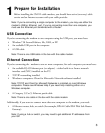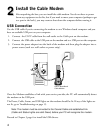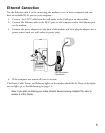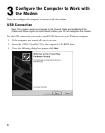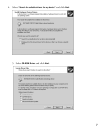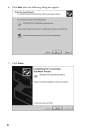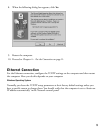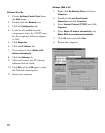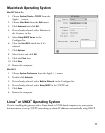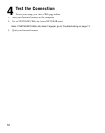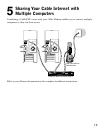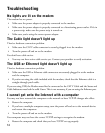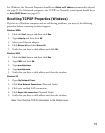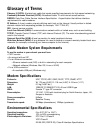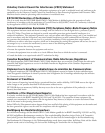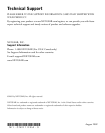
Glossary of Terms
Category 5 (CAT5): A twisted pair cable that meets specified requirements for high-speed networking.
Community Antenna Television (CATV): Broadband cable TV and Internet access service.
DOCSIS: Data Over Cable Service Interface Specification. A specification that defines interface
requirements for cable modems.
IP Address: A 4-part number uniquely defining each host on the Internet. Usually written in dotted-
decimal notation with separating periods (for example, 134.177.244.57).
ISP: Internet service provider.
Local Area Network (LAN): A communications network within a limited area, such as one building.
TCP/IP: Transfer Control Protocol (TCP) with Internet Protocol (IP). The main internetworking protocol
used in the Internet.
Universal Serial Bus (USB): A local connection for serial peripheral devices.
Wide Area Network (WAN): A long distance link used to extend or connect remotely located local area
networks (for example, connecting your home computer to the Internet).
Cable Modem System Requirements
To use the modem in your network you must have:
• CATV service
• An account with an ISP
• For an Ethernet connection:
• Ethernet network card (NIC) or built-in networking for each computer
• Network software (Windows, Mac OS, Linux or UNIX)
• For a USB connection:
• An available USB port (Windows only)
Modem Specifications
Protocols: UDP, TCP/IP, ARP, ICMP, DHCP, TFTP, SNMP, HTTP
Dimensions: W: 175 mm (6.89”) D: 118 mm (4.65”) H: 28 mm (1.10”)
Weight: 0.3 kg (0.661 lbs.)
LAN: 10BASE-T/100BASE-TX RJ-45 and USB B type
WAN: Female “F” type RF connector
Power adapter: 12 V AC, 1.25 A with localized plug for North America, Japan, UK,
Europe or Australia
Power consumption: 8 Watts
Security: Baseline Privacy
Transmission speed: 38 Mbps (downstream), 10Mbps (upstream)
Environmental Specifications
Operating temperature: 0 to 40°C (32˚ to 104˚F)
Operating humidity: 10% to 90% noncondensing
Electromagnetic Emissions: FCC Part 15 Class B
VCCI Class B
EN 55 022 (CISPR 22), Class B Interface Specifications



